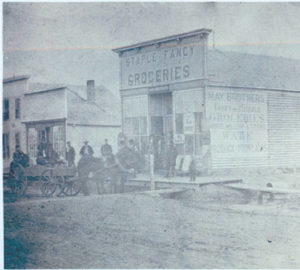Brief History of Fremont, Nebraska

Early days in Fremont Nebraska
Fremont, the largest city in Dodge County, Nebraska, was platted in the southwestern corner of the county in 1856 by the Fremont Town Lot Company along the Military Road which ran from the Missouri River to Fort Kearny. The new townsite was named after General John Charles Fremont, who had led a number of explorations across America between 1842 and 1854. The fertile valley encompassed not just the Platte River, but the smaller, meandering Elkhorn River as well. By 1860 Fremont was selected as the Dodge County seat, and the first courthouse was constructed in 1868. The town prospered along the well-traveled route, and received a much needed boost by westward travelers seeking land, as well as gold.
By 1866 the Union Pacific Railroad laid tracks through Fremont, and by 1869 the Sioux City and Pacific Railroad also was represented in Fremont. Fremont quickly became established as an important trade center for the Platte and Elkhorn River valleys. By the 1880s the city was extremely prosperous with manufacturing and wholesale jobbers supplying employment to the city’s labor force. Among the business enterprises in Fremont, many were agriculture-related, including meat processing, milling, and farm implement manufacturing. As Fremont grew, so did city improvements. Broad Street and Military Avenue were improved, a city waterworks was constructed, and the city hall was built. In 1884 the Fremont Normal and Business Institute was established in the city. By 1890 Fremont boasted a population of 6,741. In the 1890s city improvements continued, with the addition of a hospital, a new post office building, and additional new homes and commercial buildings. Into the first years of the new century, the city saw a new high school, and a Carnegie library.
By 1906 Fremont supported tracks from four major railroads, which assisted the city in becoming a manufacturing center, agricultural center, and supplier to the western plains. The city continued to grow, and by 1920 the population had reached 9,605.
